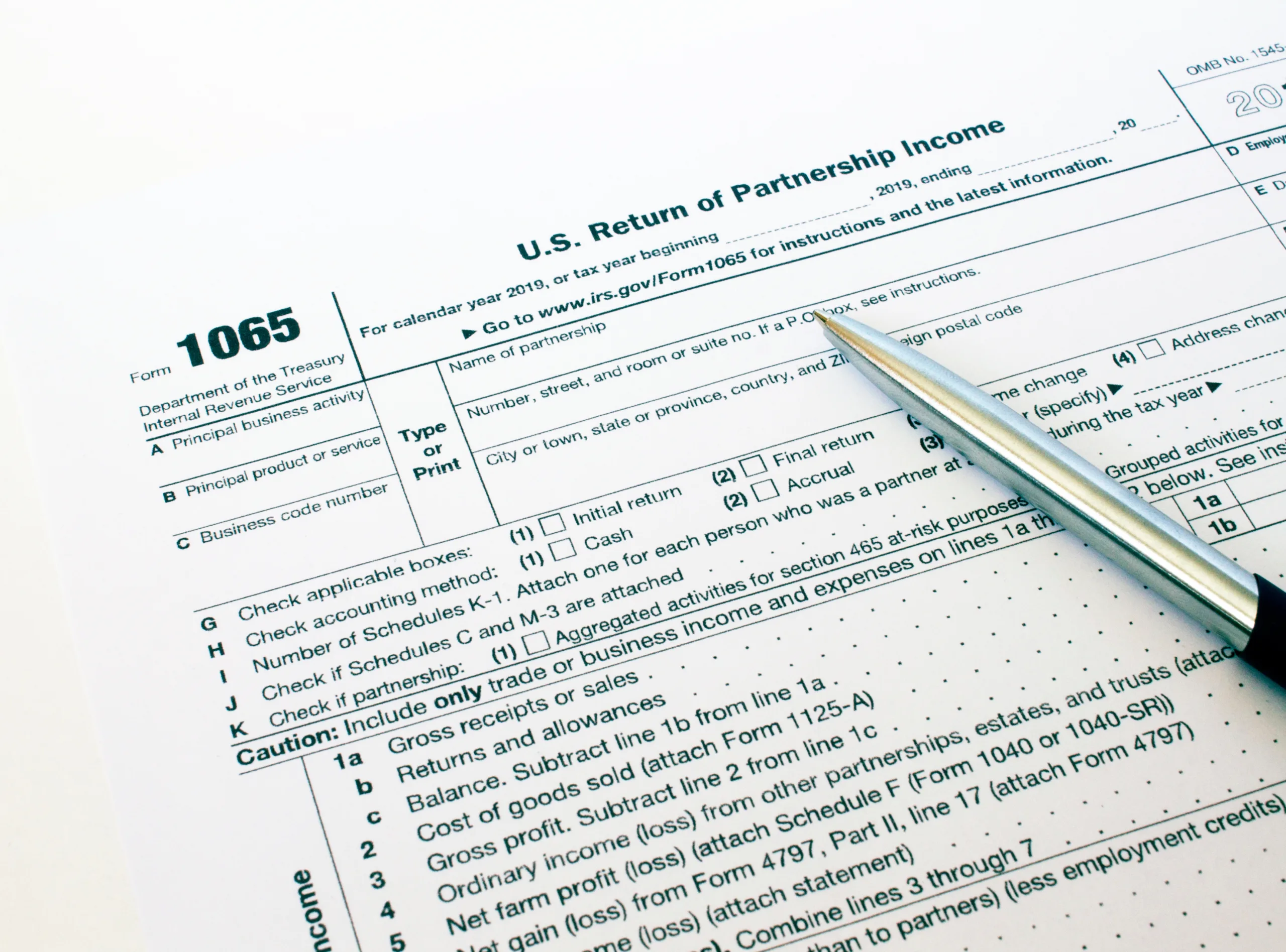Partnership taxation is a complex area of the law. However, if you understand a few key characteristics of how partnerships are taxed, you can make better decisions upon entering and exiting partnerships. First, partnerships are taxed differently from individuals and corporations. In the United States, partnerships are considered pass-through entities for tax purposes, meaning that the partnership itself does not pay federal income tax on its income. Instead, the partnership’s income, deductions, and credits flow through to the individual partners, who report their share of the partnership’s tax items on their personal tax returns. The partners are taxed on their share of the partnership income, whether or not it is actually distributed to them.
Partnership Tax Return (Form 1065)
Each year, the partnership must file an informational return (Form 1065) to report its income, deductions, and credits to the IRS. Form 1065 provides the Internal Revenue Service (IRS) with information about the partnership’s financial activities and the allocation of income, deductions, and credits among the partners.
The partnership must file Form 1065 each year, regardless of whether it had any income or incurred any losses. The form must be filed by the partnership’s tax return due date, which is usually March 15th for calendar-year partnerships.
In addition to providing the IRS with information about the partnership’s financial activities, Form 1065 also serves as the basis for determining each partner’s share of the partnership’s tax items, which the partners then report on their personal tax returns. The partnership must also provide each partner with a Schedule K-1, which reports the partner’s share of the partnership’s tax items.
It is important to note that the information reported on Form 1065 may have implications for the partners’ individual tax liability, and the form must be completed accurately and filed timely.
What Deductions are Available on a Partnership Tax Return?
Partnerships are eligible for various deductions on their tax return, including:
Business expenses
The partnership can deduct ordinary and necessary business expenses such as rent, utilities, supplies, and employee salaries.
Depreciation
The partnership can claim a deduction for the gradual wear and tear of business property, such as buildings, machinery, and equipment.
Interest
The partnership can deduct interest expenses related to business loans.
Charitable contributions
The partnership can deduct charitable contributions made to qualified organizations.
State and local taxes
The partnership can deduct state and local taxes paid on behalf of the business.
Bad debts
The partnership can deduct any uncollectible accounts receivable as a business bad debt.
It is important to note that the specific deductions available to a partnership can vary depending on the jurisdiction and the specific facts and circumstances of each case. The IRS sets limits and restrictions on some deductions, and the rules can be complex.
Do Partnerships Pay Any Taxes?
While partnerships don’t pay income taxes, these entities are responsible for paying employment taxes on behalf of their employees. This includes the following taxes:
Federal Insurance Contributions Act (FICA) tax
This tax is comprised of Social Security tax and Medicare tax, and is withheld from an employee’s pay. The employer is responsible for matching the employee’s portion of the FICA tax and paying the total amount to the Internal Revenue Service (IRS).
Federal Unemployment Tax Act (FUTA) tax
This tax is used to fund the unemployment insurance program, and is paid by the employer only.
State unemployment insurance (SUI) tax
This tax varies by state and is used to fund the unemployment insurance program.
What’s the Difference between Inside Basis and Outside Basis?

Inside basis and outside basis are two important concepts in the taxation of partnerships.
Inside basis refers to the tax basis of a partner’s ownership interest in a partnership. It is determined by taking into account the partner’s initial investment in the partnership, as well as any additional contributions made by the partner and any distributions received from the partnership. The inside basis is used to calculate the partner’s taxable gain or loss on a disposition of the partnership interest.
Outside basis refers to the tax basis of the partnership’s assets. It is determined by taking into account the original cost of the assets, any additions or improvements made, and any depreciation claimed. The outside basis is used to calculate the partnership’s taxable gain or loss on the sale or other disposition of assets.
It is important to understand the difference between inside basis and outside basis as it affects the tax treatment of a partnership and its partners. For example, if a partner receives a distribution from the partnership, the distribution will first reduce the partner’s inside basis, and if the inside basis is reduced to zero, any further distribution will be taxed as a return of capital. On the other hand, a sale of a partnership asset will result in a gain or loss to the partnership based on the difference between the outside basis of the asset and the sales price.
How do I Calculate my “Inside” Tax Basis in a Partnership?
Your tax basis in a partnership is referred to as your “inside basis.” Your inside basis is used to calculate your taxable gain or loss when you dispose of your partnership interest. The calculation of your inside basis in a partnership involves the following steps:
Initial investment
Your initial investment in the partnership, including any cash or property that you contribute, is added to your inside basis.
Additional contributions
If you make additional contributions to the partnership, such as additional cash or property, these contributions are added to your inside basis.
Distributions
Any distributions that you receive from the partnership reduce your inside basis.
Allocations of income and loss
The partnership’s income, gain, deductions, and losses are allocated to the partners in accordance with their agreement or the partnership agreement. The allocations increase or decrease your inside basis accordingly.
It is important to keep accurate records of your initial investment, additional contributions, distributions, and allocations of income and loss to ensure that your inside basis is calculated correctly.
Next Steps
It is important to note that the taxation of partnerships can be complex, and the details may vary depending on the jurisdiction and the specific facts and circumstances of each case. If you have more specific questions, it is best to consult with a tax professional or attorney for guidance.

